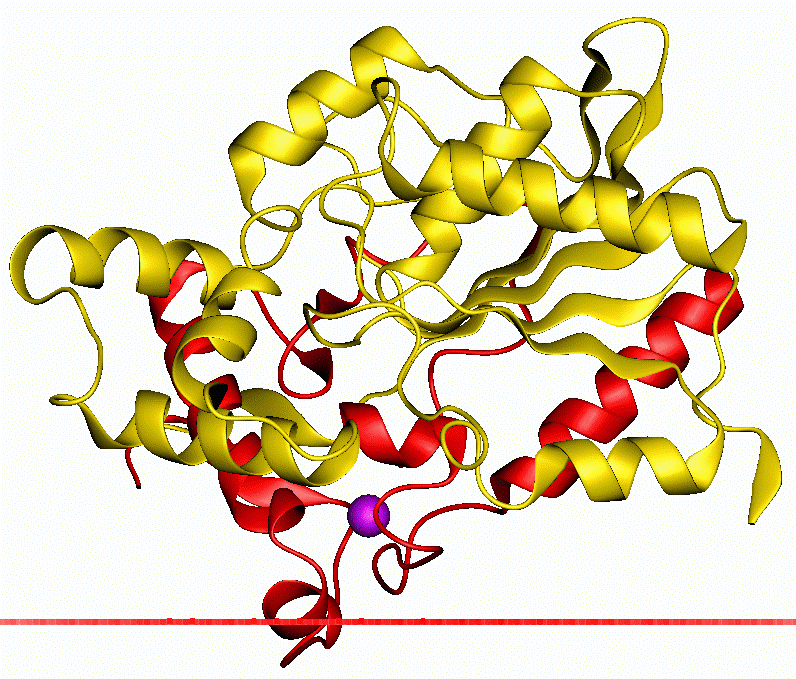Mempro™ Cell-Based Alpha/Beta-Ηydrolase Production
Creative Biostructure can offer custom Mempro™ alpha/beta-hydrolase production services using cell-based expression system. Our cell-based expression system can best preserve the native conformation of alph/beta-hydrolases.
Mempro™ cell-based protein production system is commonly used for producing integral membrane proteins, such as G-protein coupled receptors (GPCRs) and ion channels. Alpha/beta-hydrolase are a superfamily of hydrolytic enzymes with diverse catalytic and non-catalytic functions. Members of this superfamily possess a specific domain termed as alpha/beta-hydrolase fold, which is an alpha/beta-sheet containing 8 beta strands connected by 6 alpha helices. The alpha/beta-hydrolase fold is found in a wide variety of enzymes which do not share obvious sequence similarity. The enzymes that have alpha/beta-hydrolase fold include acetylcholinesterase, lipase, dienelactone hydrolase, epoxide hydrolase, hydroxynitrile lyase, proline iminopeptidase, thioesterase, serine carboxypeptidase, haloperoxidase, haloalkane dehalogenase, proline oligopeptidase and others.
 Figure 1. The structural model of bacterial lipase. (OPM database)
Figure 1. The structural model of bacterial lipase. (OPM database)
Creative Biostructure has extensive experience in high-quality alpha/beta-hydrolase production based on cell-based membrane protein expression system, we can provide various strategies for Mempro™ cell-based protein production, including:
- Mempro™ Protein Production in Bacterial Cells System ;
- Mempro™ Protein Production in Yeast Cells System;
- Mempro™ Protein Production in Incest Cells System;
- Mempro™ Protein Production in Mammalian Cells System.
Escherichia coli (E. coli) is the most widely used bacterial host for the production of alpha/beta-hydrolases. There are two strategies that can be performed in bacterial cells expression system, the expression as soluble membrane proteins inserted into the membrane or as inclusion bodies representing cytoplasmic aggregates. Yeast cells (specifically saccharomyces cerevisiae and pichia pastoris) system, combines prokaryotic as well as eukaryotic characteristics. It is a charismatic eukaryotic host due to single cells, fast growth rates, inexpensive media, as well as high cell densities. Insect cells (such as Sf9, Sf21 and High Five) are also a major system for alpha/beta-hydrolase expression, which are developed from transfected insect cells in combination with vectors derived from the baculovirus species AcMNPV. Mammalian cells present another eukaryotic system cell environment. Cell lines derived from COS, CHO, BHK-21, HEK293, HeLa and GH3 are commonly used for integral membrane protein expression.
With the Mempro™ cell-based protein production platform, Creative Biostructure is capable of expressing, isolating, purifying and crystallizing alpha/beta-hydrolases to facilitate the study of their biological functions.
We provide other various Mempro™ membrane protein production services. Please feel free to contact us for a detailed quote.
References:
C. Trometer, and P. Falson (2010). Mammalian membrane protein expression in baculovirus-infected insect cells. Methods Mol. Biol., 601: 105-117.
F. Junge, et al. (2008) Large-scale production of functional membrane proteins. Cellular and molecular life sciences, 65 (11): 1729-1755.
J. Petschnigg, et al. (2011). Using yeast as a model to study membrane proteins. Curr. Opin. Nephrol. Hypertens., 20(4): 425-432.
M. Holmquist (2000). Alpha/beta-hydrolase fold enzymes: structures, functions and mechanisms. Curr. Protein Pept. Sci., 1(2): 209-35.
S. Schlegel, et al. (2013). Bacterial-based membrane protein production. Biochim. Biophys. Acta., 1843(8): 1739-1749.